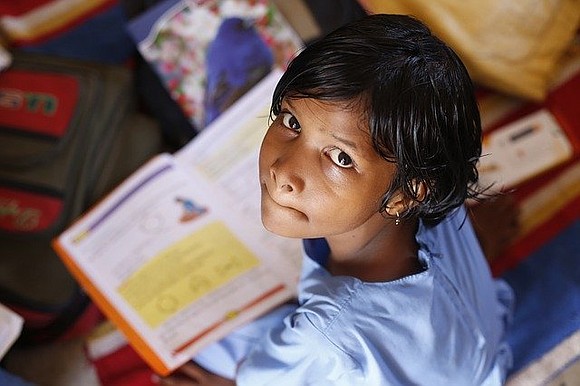The Commission on Innovation and Excellence better known as the Kirwan Commission took over the newly minted commission in 2016.
The Commission issued a 200 plus page final report on November 21, 2019 to the Maryland General Assembly.
Six hours of legislative hearings took place on February 17, 2020. Baltimore Mayor Bernard C. “Jack” Young gave a ringing endorsement for Kirwan funding. On February 16, 2020, while testifying before the Education and Appropriations Committees he said that a poor education meant a lot of young people needlessly dying on the city’s streets.
At the bill’s hearing, according to Baltimore Sun reporters, Mayor Young said, “When people ask me, ‘why is Kirwan so important?’ I say it’s because for some of our young people, having the right support is a matter of life and death.”
Young cited the bill’s requirement that some local schools systems, including Baltimore’s, contribute hundreds of millions of dollars that the city could ill-afford to do.The Kirwan funding bill passed March 6, 2020 in the House Maryland General Assembly 96-41 based on the Kirwan Commission Report. Aptly titled, the Blueprint for Maryland’s Future, the
bill proposes ten years to be phased-in at $2.8 billion; that the state pays for most costs and local governments contribute a much smaller amount.
Political debate continues as to sources of state revenue regarding Kirwan funding. The ACLU of Maryland makes it clear that it all starts with Article VIII of the Maryland Constitution, which reads: “The General Assembly… shall by law establish throughout the State a thorough and efficient System of Free Public Schools; and shall provide by taxation, or otherwise, for their maintenance.”
Article VIII translates into adequacy and equity. Adequacy means, that all Maryland students and each district get the resources enough to equal state standards. Counties or school districts need to provide support based on what they can afford or local wealth.
Reporter Holden Wilen of the Baltimore Business Journal took a swipe at the Baltimore City Public Schools funding last May when he questioned the use of additional funding. Between the lines, his comments in part, spoke to the lack of usefulness of additional financing. He said, “City schools spent $16,184 per pupil, according to data released by the Census Bureau— up 6.7 percent from last year when the school system ranked fifth nationally. Baltimore City is the 40th-largest elementary and secondary public school district in the U.S.” This charge has been thrown at the BCPSS for many years.
Gov. Larry Hogan said about Kirwan proposed funding according to a CBS news report: “The State should not and can not simply increase $33 billion in new spending that we do not have without any plan whatsoever about where the funding is going to come from.”
A more recent measure witnessed both Democrat and Republican Maryland lawmakers soundly defeating a revenue bill as a way to pay the State’s share for Kirwan funding. Montgomery County Eric Luedtke (D) sponsored the bill. The bill proposed to tax business and professional services that businesses opposed. Gov. Hogan also opposed the measure.
The Baltimore Teachers Union (BTU) newsletter offered structural funding sources for the state— “closing tax loopholes, ending giveaways to large corporations, and having the super-rich pay their fair share of state income taxes.”
The Funding Coalition spoke to the same point in a statement refuting Gov. Hogan’s critiques concerning his worry about unknown funding, the Maryland Funding Coalition made similar remarks.
The group said in a Community United newsletter: “We can afford to invest more in our schools if we take a few steps to clean up our ineffective tax code: eliminate ineffective tax breaks and close loopholes that benefit wealthy individuals and large corporations.”
The loose coalition includes the Baltimore Teachers Union, CASA, AFSCME MD, Communities United, Good Jobs First, Maryland Center on Economic Policy, Maryland Nonprofits, and SEIU Local 500.
“Take revenue from the police and police overtime to pay for BCPS’s share of Kirwan,” said Dr. Jay Gillen, a longtime Algebra Project facilitator and educator who offered one source regarding Baltimore City’s share.
Goucher College’s Mileah Kromer, director of the Sarah T. Hughes Field Politics Center at Goucher, released a survey recently regarding Kirwan funding. The survey revealed that even though, a majority of people support the plan, 51 percent of those surveyed thought that state taxes are too high to raise revenue for Kirwan funding.
The bottom line remains. Three education funding proposals still require passing: A $4 billion a year in state and local Kirwan funding; a $2.2 billion pubic school construction bill; and a $580 million increase to Maryland historically black colleges and universities. All maintain some impact on Baltimore.The Maryland General Assembly voted on Tuesday, March 17, 2020 to approve the Blueprint for Maryland’s Future bill and it is now on the Governor’s desk.
If Governor Hogan rejects it, then the General Assembly must have enough votes to override it.
Former Coppin State University Professor, Dr. Ken Morgan is a human rights activist. He can be reached at: btimes@btimes.com
